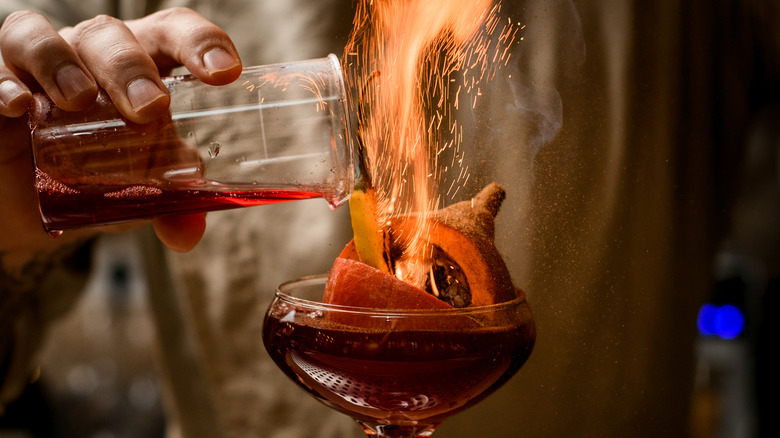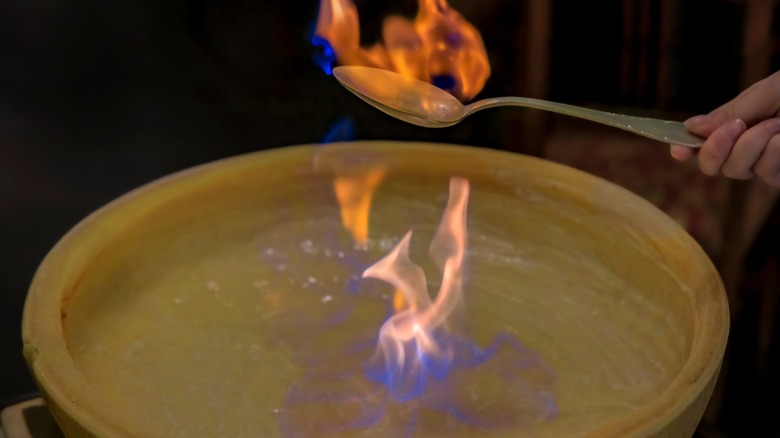Flambé Has Been Around A Lot Longer Than You Might Think
The word flambé sounds ooh-la-la délicieux, and that's because it is. The word simply means flame in English, but if applied to fiery cocktails, booze-infused desserts, pancakes, punches, or warm Christmas puddings, delicious is indeed the adjective to use. While you're at it, toss in tasty, toasty, and dazzling, particularly when served tableside in grand fashion.
The flambé technique involves dousing food or liquid with alcohol, then catching it on fire, and while it's a mesmerizing presentation, torching a plate of cherries, bananas, steak, rum, or punch can also improve flavor by caramelizing sugar, lightly toasting spices or citrus peels, and adding a pleasant char to a dish or beverage. And people have been doing it for longer than you might imagine.
Some popular flambé desserts are mid-century marvels of the 1900s, including Bananas Foster, which came to life in the French Quarter of New Orleans in 1951. Around that time, fiery tableside dining became trendy in upscale dining establishments, explains the New York Times, served by bowing waiters in tuxedos, who were just as likely to light your cigarette as your dessert.
But to really understand flambé cooking, you'll need to go further back ... way further.
Pyrotechnic punches
From Greek Saganaki to Baked Alaska, Cherries Jubilee, and Crepes Suzette, flambé fans haven't let the fire die down. It could have been burning as far back as the 14th century, with rumors of flaming dishes in the Moors civilization or medieval banquets, though there's little concrete evidence to support this. Credit generally goes to French chefs for inventing flambé, which later spread across the channel to the English.
The 1800s were rife with famous flambé aficionados, including none other than England's literary darling, Charles Dickens. Mrs. Cratchet in "A Christmas Carol" grandly presented her Christmas pudding blazing with brandy, and the author himself relished lighting up his carefully concocted punch creations, which contained citrus, sugar, and rum (via The University of Leeds).
By the end of the 19th century, Chef Auguste Escoffier created Cherries Jubilee, a prince among flambéed desserts, to celebrate the Jubilee of Queen Victoria. The liqueur that gets the torch is traditionally Kirschwasser, also known as kirsch, made from distilled black morello cherry juice.
Then there's the German blazing holiday punch, a hard-to-pronounce extravaganza known as Feuerzangenbowle. It involves a large cauldron, mulled wine, spices, an enormous cone of sugar soaked in rum, and flames dancing or shooting from the liquid. Recipes for the beloved punch are recorded in cookbooks as far back as 1905, according to Atlas Obscura, though tall tales and drinking songs indicate this bubbling and brewing occurred at student shindigs as far back as the mid-1700s.

